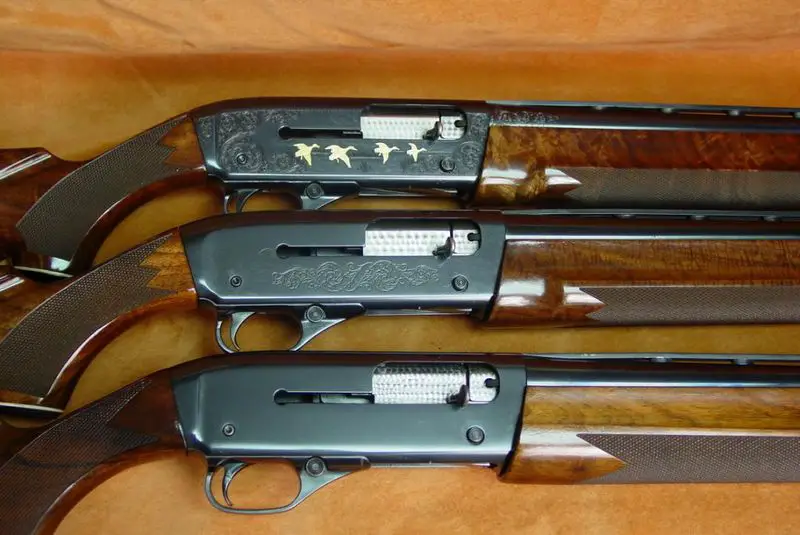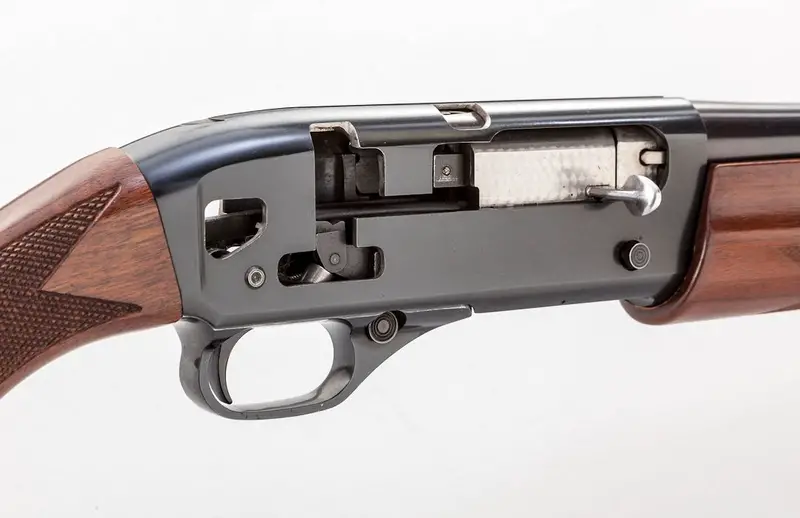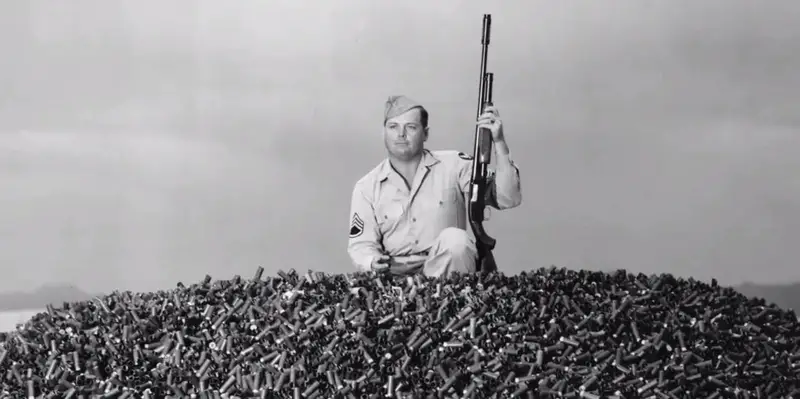The Remarkable Winchester Super-X Model 1

Super-X Model 1 examples from Mike Petruzzello. The uppermost gun is a Super Pigeon Grade done by Nick Kusmit.
The
late Bob Baumgart, who lived in nearby Wisconsin, used to ring me up
with regularity in the late 1980s and explain to me that the
Winchester Super-X Model 1 was the best autoloader ever made. By then
I was quite happily using B-80's for race games and high-volume
wing-shooting, but I appreciated his enthusiasm. Bob took great
delight in updating and renovating Super-X Model 1's, and got a hold
of one of the original 16mm Winchester promotional films and had it
transferred to VHS. Bob sold a few copies, gave a few away, and often
included one with one of his updated SX-1's.
Winchester has long been a powerful and famous brand. John Olin began his career working for Western Cartridge in 1913. After Western bought Winchester in 1935, John Olin was First V-P of Winchester-Western, President of Olin in 1944, Chairman of the Board in 1954, and then Chairman of the Executive Committee. John Olin wasn't particularly concerned with profits at Winchester, he was more concerned with quality, believing that the better his guns were, the more ammunition he would sell. In 1963, though, John Olin was screwed, “promoted” to “Honorary Chairman of the Board” in 1963. 1964 is still referred to as “the year that Winchester died.” John Olin no longer had control of operations. In an effort to become profitable, Winchester downgraded their entire product line and the public never forgave them.

The Super-X Model 1 is considered Winchester's last attempt at greatness. Stinging from the barrage of post-1964 criticism, in 1968 someone decided they were going to do it right, developing a new autoloading shotgun with no compromises in build quality, using only machined steel and walnut. The multi-million dollar journey began, ending in 1973 with the release of the Super-X Model 1.

Herb Parsons, one of the greatest exhibition shooters, with a Winchester Model 12: the greatness of which the SX-1 was intended to recapture.
Although the Model 12 pump, “The Perfect Repeater,” was dropped from regular production in 1963, in 1972, a one year before the release of the Super-X Model 1, the Model 12 (Y series) returned to regular production, in 12 gauge only.
As you can tell from the video, the all-machined steel and walnut approach is time-consuming and expensive. Winchester designed and built complete new machining centers for the Super-X Model 1, but despite the time and effort, the Model 1 was costly to produce. In 1973-1974, the Winchester Super-X Model 1 was the best-built gas autoloader on the planet, but that didn't mean that it functioned better as far as the mainstream hunter was concerned. Though Bob Brister remarked that the Super-X Model 1 was the most reliable autoloading shotgun in a sandstorm, the duck blinds were full of far less costly Remington 870s and supremely well-built Browning Automatic-Five. Shortly after the Super-X Model 1 was introduced, in 1975, FN succumbed to the high cost of hand work and moved A-5 production to Japan in an effort to shave costs.
It
was a challenging time to release an expensive autoloader, for sales
of the Browning A-5 were already dwindling, and the less expensive
Remington 1100 had a decade-long head start, was a resounding
success, and was available in all popular gauges plus the .410 bore.
Beretta was a relative newbie to autoloading shotguns, making their first in 1960. In the United States, their market-share was minimal to non-existent. However, in 1971 with the A301, Beretta made their first 20 gauge autoloader. Beretta had no clay guns in their line until 1985. That was the year of the A303 and well after the end of the Super-X Model 1.
The
day of the steel receiver autoloader was setting. The Browning B2000
lasted only from 1974 – 1981, and the B2000 also had a steel
receiver and was expensive. Even though the B2000 was made in skeet
and trap versions as well as a Buck Special slug gun, it was also
made in 20 gauge, yet it sold only about 115,000 units in the United
States. The production of the Browning B2000 coincides with the
Super-X Model I production, which also ended production in 1981.
Though the B2000 sold 115,000 units, the SX M1 sold even less,
estimated at 85,000 or so.
The
end of the Super-X Model 1 was also the end of Olin's interest in gun
manufacturing, for in 1981 Olin sold Winchester to the employee
formed U.S. Repeating Arms Company, which went bankrupt in 1989.
Browning acquired what was left of USRAC, but on March 31, 2006, the
New Haven facility was closed for good. Essentially what was left in
production at that time was the Model 70, Model 94 and the
Model 1300.
All newly-designed firearms lose money. As for what the results were with the Super-X Model 1, it is hard to say. The first Model one to come out of production cost upwards of $2.5 million: that would be in excess of $4.5 million today. The rest cost substantially less.
The passing of the Winchester Super-X Model 1 was the passing of an era. It was the end of Olin-Winchester firearms, and it was the end of any new attempts at the “proper autoloader”: polished blue, machined steel, and well-finished walnut. There was a time when rough, matte finishes were viewed with contempt. Plastic parts and stamped metal parts were often looked at with great disdain. Plastic stocks were once considered something that only Hasbro or Mattel would willingly produce. Engine-turned bolts, grip caps, polished blue, well-matched carefully dried walnut, and hand-engraved steel were considered mandatory attributes of a quality firearm. Those days are gone, never to return. Do you miss them, yet?
Copyright 2018 by Randy Wakeman. All Rights Reserved.












